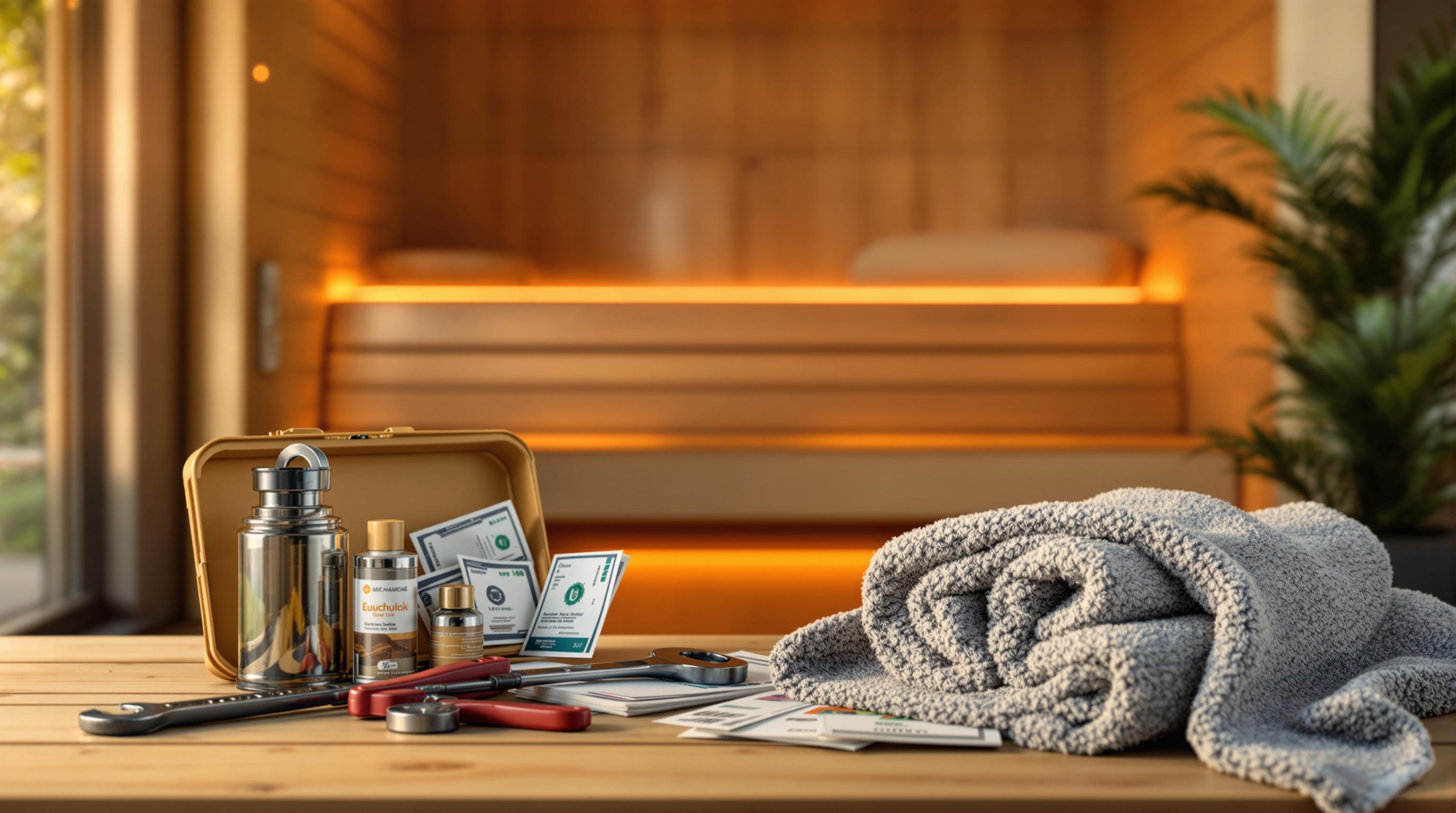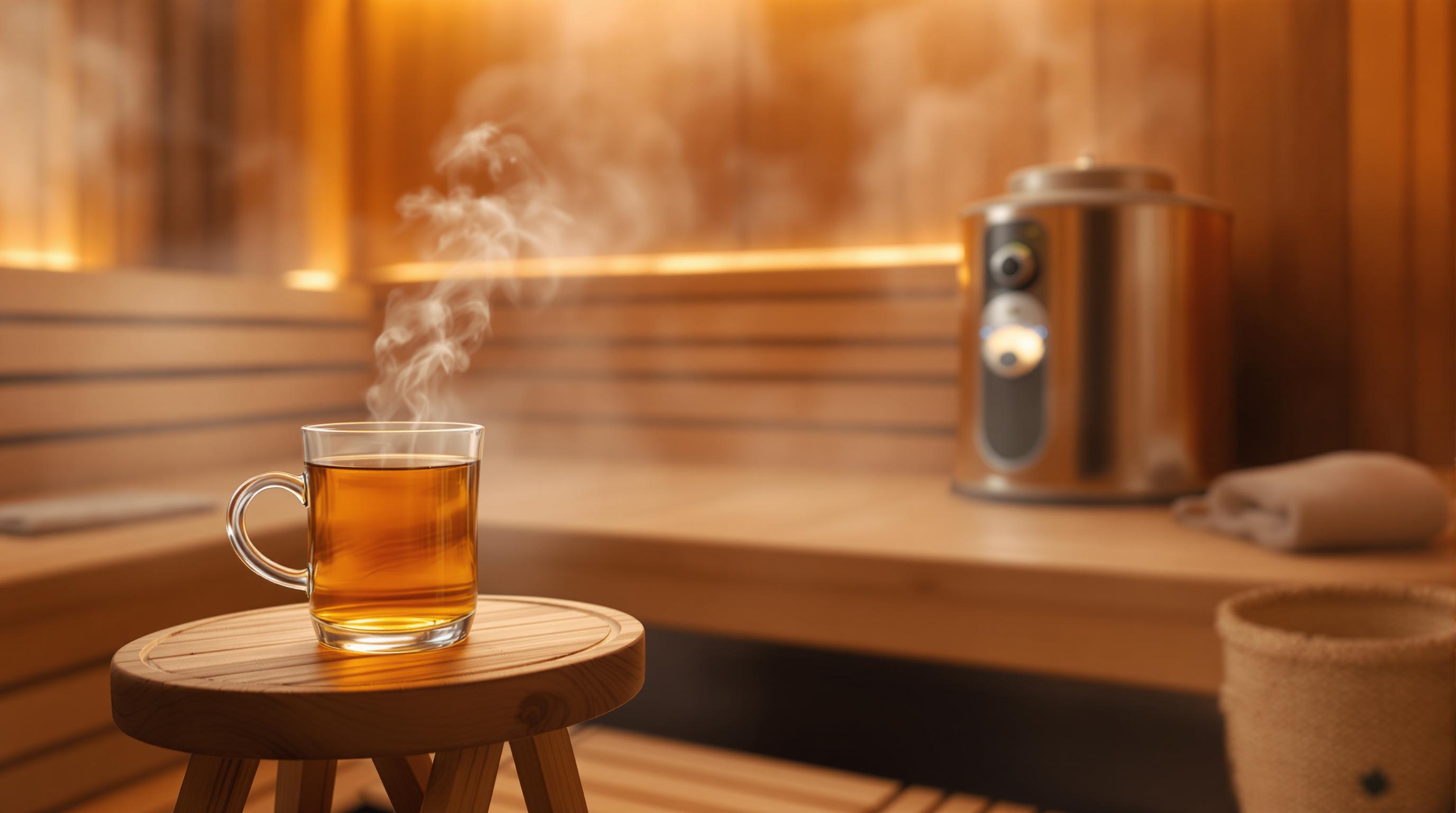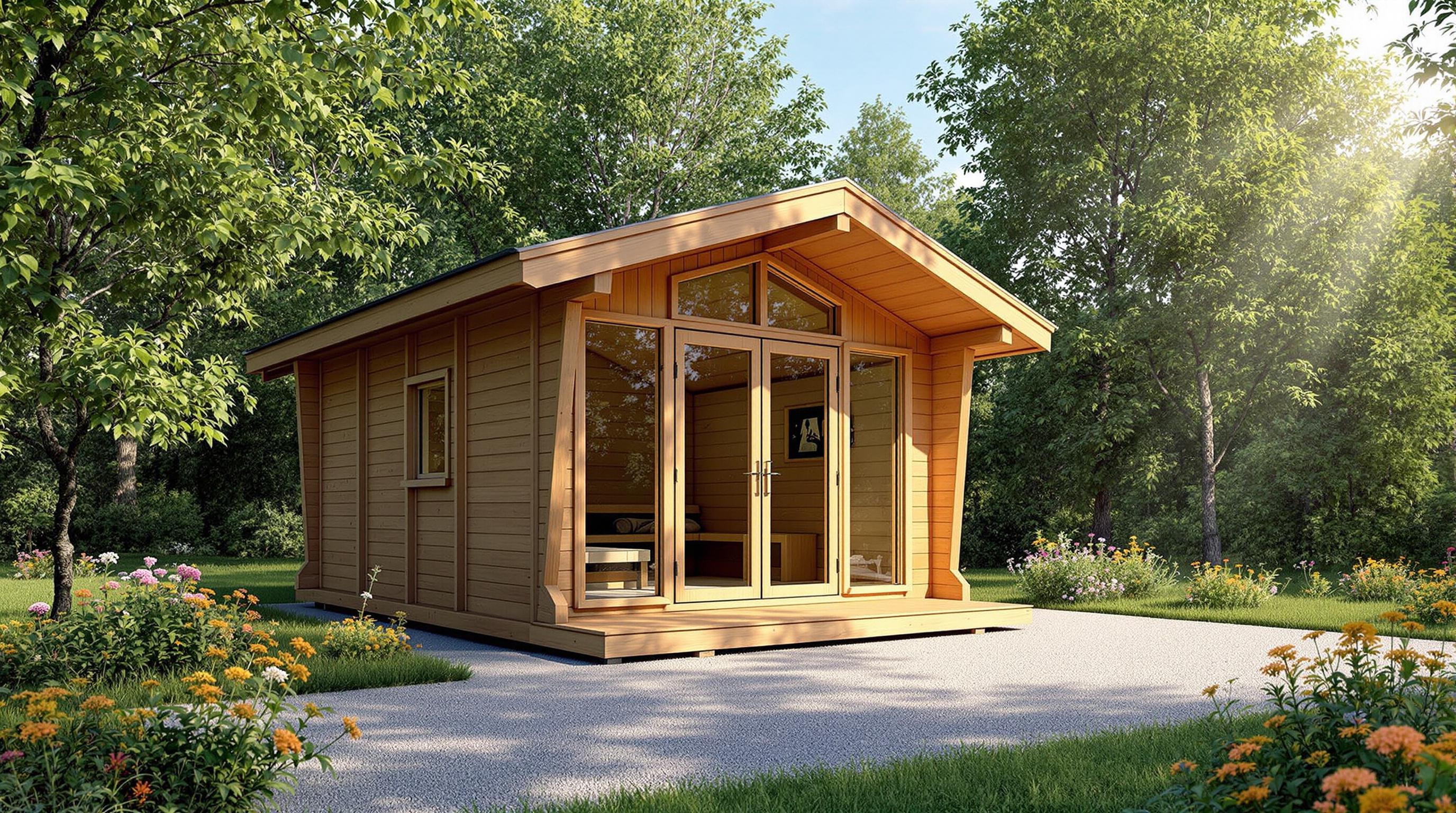Humidity can make or break your sauna wood. High humidity causes warping, cracking, and mold, while low humidity makes wood brittle. Here's what you need to know:
- Best Woods: Western Red Cedar resists moisture naturally. Thermally treated woods like Thermo Spruce and Thermo Alder offer superior durability in high-humidity conditions.
- Common Problems: Warping, cracking, weakened joints, and mold growth are all risks without proper humidity control.
- Prevention Tips:
- Use dehumidifiers and ensure proper ventilation.
- Apply protective coatings like sauna oil or wood sealant every 6-18 months.
- Monitor humidity with a hygrometer to keep levels between 10%-30%.
Choosing the right wood and managing moisture are key to extending your sauna's lifespan and maintaining its structure. Let’s dive deeper into how to protect your sauna wood.
Effects of Humidity on Sauna Wood
Warping and Cracking from Moisture
High humidity in saunas puts a lot of pressure on wooden structures. When wood absorbs and releases moisture, it expands and contracts, leading to physical stress. Over time, this cycle can cause visible damage like warping or cracking [1][2].
This issue is especially pronounced at joints where wooden pieces meet. The repeated movement caused by moisture can weaken these connections, ultimately affecting the sauna's overall stability.
Mold and Mildew Problems
Excess humidity creates the perfect environment for mold and mildew to thrive. These fungi not only damage the wood but also pose health concerns [2]. Mold weakens the wood from the inside, accelerating its decay. If left untreated, it can ruin both the appearance and the structural integrity of the sauna.
Shortened Lifespan of Sauna Wood
Poor humidity control can drastically cut down the lifespan of sauna wood. Traditional saunas often reach humidity levels of up to 45%, which makes managing moisture levels a key factor in preserving the wood [1].
Here’s a breakdown of how humidity affects wood and what can help:
| Factor | Impact | Prevention |
|---|---|---|
| High Humidity & Fluctuation | Warping, decay, weakened joints | Use dehumidifiers, apply protective finishes |
| Condensation | Surface damage, mold growth | Improve ventilation |
Choosing the right materials can also help. For example, thermally modified wood offers better durability and costs less than clear cedar [4]. Making informed choices about wood type and moisture management can go a long way in extending the life of your sauna.
How to Protect Your Sauna Wood
Best Wood Choices for High-Humidity Saunas
High-humidity saunas can lead to common issues like warping, cracking, and mold. Thermally treated wood provides a reliable solution to these problems. Through a heat-based process, the wood's cellular structure is altered, making it resistant to moisture without relying on chemicals. This process also removes compounds that attract fungi, making it a great fit for sauna conditions [1].
Two standout types of thermally treated wood are Thermo Spruce and Thermo Alder. Thermo Spruce offers excellent resistance to moisture and remains stable under stress, while Thermo Alder balances strength with dimensional stability [1]. Both options perform far better than untreated wood in humid environments, offering solid protection against moisture-related damage.
| Property | Benefit | Impact on Sauna |
|---|---|---|
| Reduced moisture absorption | Minimizes warping | Extends wood's lifespan |
| Fungal resistance | Maintains wood integrity | Creates a healthier space |
| Better heat retention | Boosts efficiency | Lowers operating costs |
"The thermal modification process removes organic compounds that attract fungi and insects, enhancing its resistance to rot and decay", according to industry experts [3].
Selecting the right wood is a key step, but it’s just as important to manage humidity properly to keep your sauna wood in top condition. Up next, we’ll dive into practical ways to protect your sauna from moisture damage.
sbb-itb-3953eb0
Tips to Protect Sauna Wood from Humidity
Use Dehumidifiers and Ensure Proper Ventilation
Managing moisture is crucial for keeping sauna wood in good condition. Dehumidifiers and effective ventilation systems help control humidity levels, ensuring steady airflow. This reduces the risk of wood warping and helps maintain the structure of your sauna [2].
Apply Protective Coatings
Protective coatings like sauna oils and sealants act as a barrier against moisture. These treatments not only shield the wood but also help maintain its natural look and extend its durability.
| Coating Type | Benefit | Reapplication Interval |
|---|---|---|
| Sauna Oil | Adds moisture resistance | Every 6-12 months |
| Wood Sealant | Provides extra protection | Every 12-18 months |
Monitor Humidity with Hygrometers
Using a hygrometer allows you to keep an eye on humidity levels. This tool helps you make timely adjustments to ventilation or dehumidification systems, minimizing potential moisture-related damage [2].
To keep your sauna in top shape, pair these strategies with regular upkeep. Clean the space routinely and inspect the wood for any early signs of damage. This proactive approach will help your sauna wood stay strong and look great for years [2].
Conclusion: Protecting Sauna Wood for Long-Term Use
Keeping humidity levels in check is key to preserving the quality and longevity of sauna wood.
Selecting the right wood makes a big difference. Options like Western Red Cedar and thermally treated wood - such as Thermo Spruce and Thermo Alder - are less prone to warping, cracking, or mold, making them excellent choices for saunas [1][3].
Maintaining humidity between 10% and 30% is equally important [2]. This range helps prevent moisture damage while avoiding over-drying, which can harm the wood's structure and appearance. Pairing these wood types with proper ventilation and protective coatings can significantly enhance durability. With these measures in place, your sauna can stay in great condition and continue to be a peaceful retreat for years.
| Protection Strategy | Maintenance Frequency |
|---|---|
| Humidity Control | Daily monitoring |
| Protective Treatments | Every 6-12 months |
| Regular Inspection | Monthly check-ups |
Explore More: Find the Home Sauna of Your Dreams

Looking for expert advice? Check out Find the Home Sauna of Your Dreams to learn more about choosing and maintaining the perfect sauna for your home.
FAQs
Is hemlock or cedar better for a sauna?
Both cedar and hemlock are suitable choices for sauna construction, but cedar stands out due to its ability to handle heat, resist moisture, and its pleasant aroma.
| Feature | Cedar | Hemlock |
|---|---|---|
| Heat Resistance | High resistance to heat | Moderate resistance |
| Moisture Resistance | Naturally resists decay | Moderate resistance |
| Aromatics | Pleasant, therapeutic scent | Minimal scent |
| Durability | Long-lasting | Stable, but less durable |
Cedar's natural ability to resist moisture and decay makes it an ideal option for saunas that operate at high temperatures [5]. Plus, its aromatic scent adds a soothing, spa-like quality that many sauna users enjoy [3].
For those dealing with extreme humidity, thermally modified woods, such as Thermo Spruce or Thermo Alder, provide an alternative. These woods are treated to improve their resistance to moisture, making them more stable in highly humid conditions than either cedar or hemlock [4].
Keep in mind that traditional saunas can reach humidity levels of up to 45% [1]. In such environments, cedar's moisture resistance plays a key role in maintaining the sauna's durability over time.
Whether you choose cedar, hemlock, or a thermally modified wood, selecting the right material is essential to reducing humidity damage and ensuring your sauna lasts for years.


